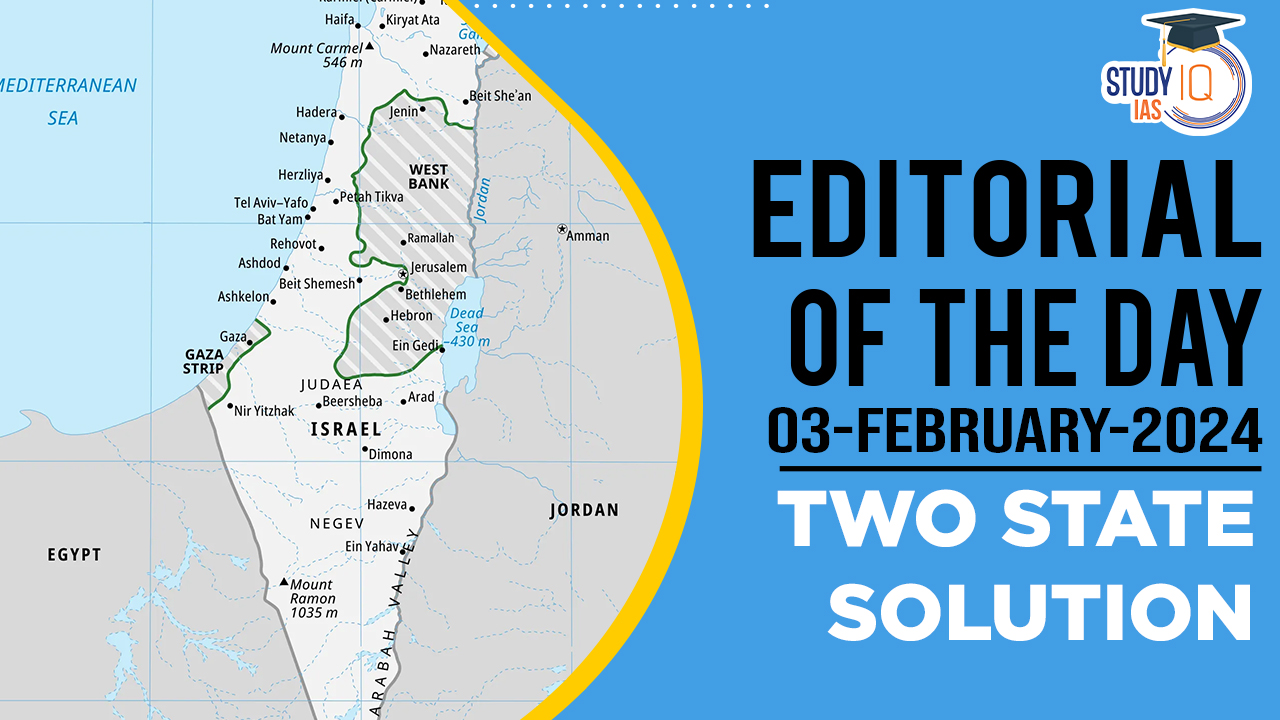Table of Contents
Background of Two State Solution
- British Foreign Secretary David Cameron hinted at a potential shift in the UK’s stance towards recognizing Palestine, sparking debate and criticism from Conservative Party circles.
- Despite reaffirmations that the government’s position remains unchanged, the conversation has reignited discussion around the Palestine question, emphasising its significance in achieving peace in West Asia.
We’re now on WhatsApp. Click to Join
Recognition of Palestine
- The recognition of a Palestinian state has gained momentum following the recent Israeli-Hamas war and the subsequent invasion of Gaza.
- The conflict underscores the urgency of resolving the Palestinian question for peace in the region.
- A two-state solution is considered one of the viable and internationally recognized pathways to peace
| Two-state solution |
| It refers to a proposed framework for resolving the Israeli-Palestinian conflict by establishing two states for two peoples: Israel as the state for the Jewish people and Palestine as the state for the Palestinian people. |
Britain’s Role and the Two-State Solution
- Balfour Declaration: In 1917, Britain issued the Balfour Declaration, expressing support for the establishment of a “national home for the Jewish people” in Palestine, then under British mandate, which laid the groundwork for the future state of Israel.
- Mandate Period: As the mandatory power over Palestine after World War I, Britain was responsible for administering the territory, which included dealing with the rising tensions between Jewish and Arab populations.
- Partition Plan: Britain’s difficulties in managing conflicting Jewish and Arab national movements led to the referral of the Palestine question to the United Nations, which proposed a partition plan in 1947, envisioning separate Jewish and Arab states.
- End of Mandate and Israel’s Creation: Britain withdrew from Palestine in 1948, leading to the declaration of the state of Israel and the subsequent Arab-Israeli war.
- Since the early 1990s, efforts, including the Oslo process, have been made towards a two-state solution, but these attempts have been largely unsuccessful.
| Oslo Accords: Key Points |
|
Challenges and Current Scenario
- Approximately 7,00,000 Jewish settlers currently reside in the West Bank and East Jerusalem, with ongoing destruction in Gaza by Israel.
- Israeli leaders, including Benjamin Netanyahu, have consistently rejected the two-state solution.
- Meanwhile, far-right settlers advocate for the complete control of Palestinian territories.
- This unsustainable scenario perpetuates cycles of violence and instability in the region.
|
Previous Year Question (2018) |
| Q. The term “Two – State Solution” is sometimes mentioned in the news in the context of the affairs of:
A. China B. Israel C. Iraq D. Yemen Answer: Option B |


 Daily Quiz 01 July 2025
Daily Quiz 01 July 2025
 Special Intensive Revision (SIR) of Elec...
Special Intensive Revision (SIR) of Elec...
 National Doctor’s Day 2025: History, T...
National Doctor’s Day 2025: History, T...





















